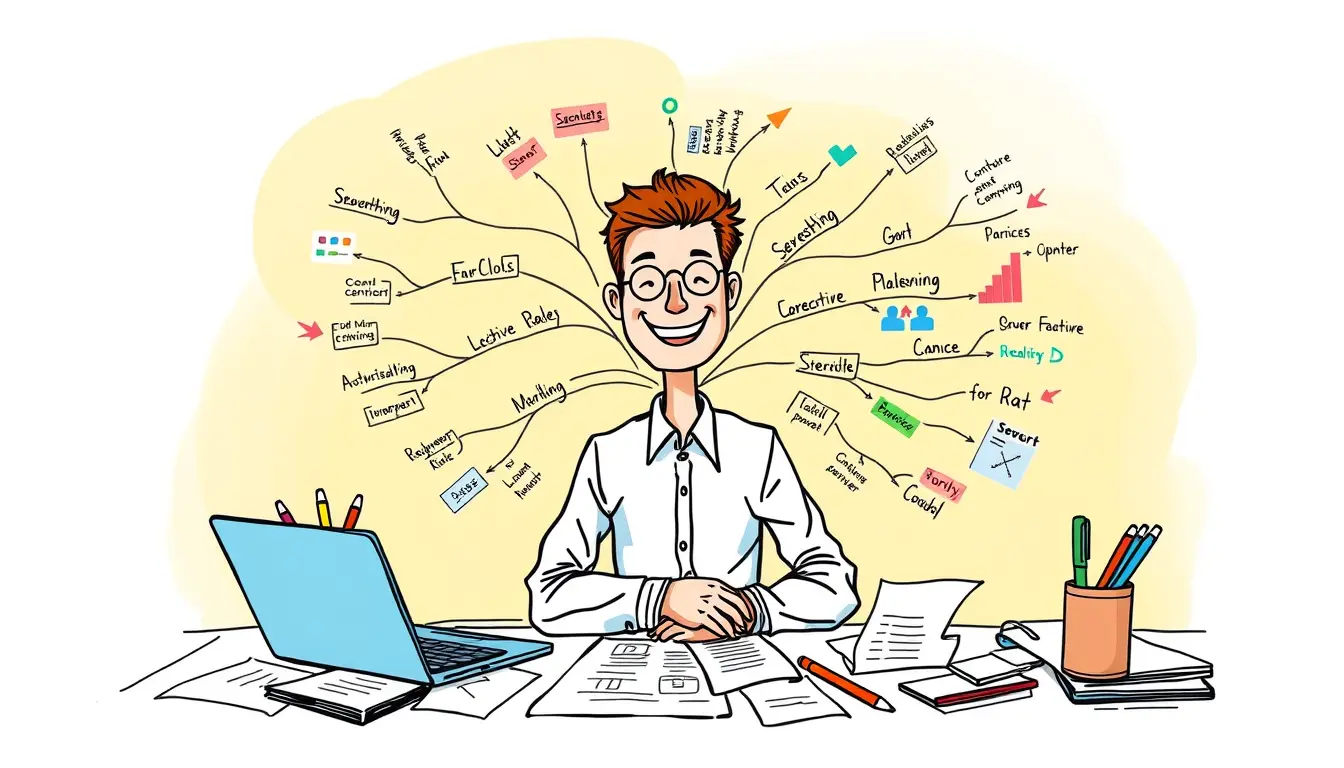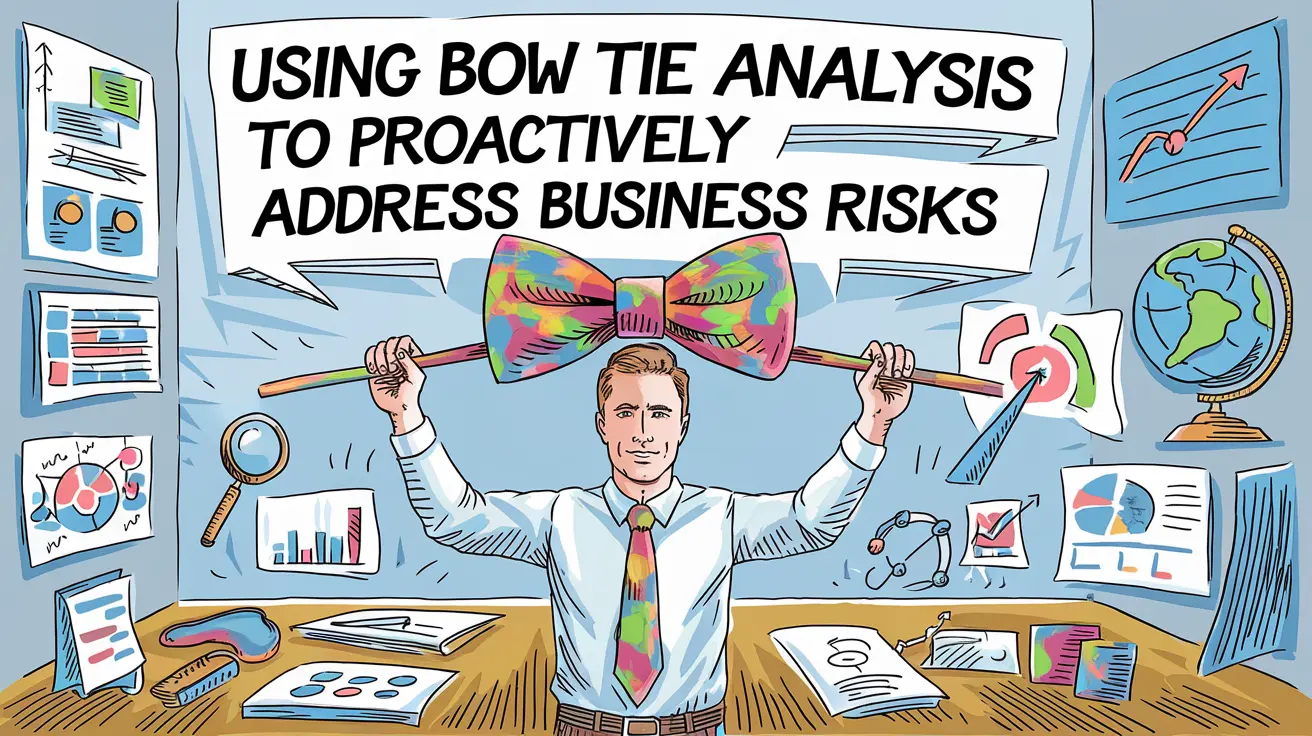If you’re looking for a way to boost your productivity and organize your thoughts, mind mapping might be just the tool you need. Mind mapping is a visual way to organize information and ideas, and it has a number of benefits for both personal and professional use. In this article, we’ll explore the benefits of mind mapping, how to get started with it, and some tips for using it effectively.
What is Mind Mapping?
Mind mapping is a technique for visualizing information in a hierarchical, tree-like structure. It was popularized by Tony Buzan, a British author and educational consultant, in the 1970s. A mind map typically starts with a central idea or theme, and branches out into subtopics, ideas, and concepts.
A mind map can be created using pen and paper or using software tools like MindMeister, XMind, or MindNode. The beauty of mind mapping is that it allows you to see the big picture while also providing a framework for organizing and prioritizing ideas.
Benefits of Mind Mapping
1. Boosts Creativity and Productivity
One of the main benefits of mind mapping is that it can help boost creativity and productivity. When you’re brainstorming ideas or working on a project, it’s easy to get bogged down in details or lose sight of the big picture. Mind mapping allows you to see how different ideas and concepts fit together, and can help you generate new ideas and connections.
2. Improves Memory and Retention
Another benefit of mind mapping is that it can improve memory and retention. Because mind maps are visual and use both words and images, they can be easier to remember and recall than lists or other forms of note-taking. Additionally, the process of creating a mind map can help reinforce information and make it easier to remember.
3. Helps with Decision Making and Problem Solving
Mind mapping can also be a useful tool for decision making and problem solving. By breaking down complex problems or decisions into smaller, more manageable pieces, you can see different options and evaluate the pros and cons of each. This can help you make more informed decisions and solve problems more effectively.
4. Enhances Communication and Collaboration
Mind mapping can also be a useful tool for enhancing communication and collaboration. By creating a shared mind map, you can ensure that everyone is on the same page and has a clear understanding of the project or task at hand. Additionally, because mind maps are visual and easy to understand, they can be a useful tool for communicating complex ideas or concepts to others.
5. Facilitates Learning and Retention
Mind maps are an excellent tool for organizing and retaining information. They make it easier to understand complex concepts and remember them for a longer time. By breaking down information into smaller, more manageable chunks, mind maps help to facilitate learning and recall. The visual nature of mind maps also helps to engage the brain in a more active way, which can enhance memory retention and make it easier to recall information later on. By creating mind maps, you can improve your ability to learn, remember, and retain information, making it an invaluable tool for students, professionals, and anyone who wants to enhance their cognitive abilities.
How to Get Started with Mind Mapping
Getting started with mind mapping is easy. Here’s a simple process you can follow:
- Start with a central idea or theme. This could be a project you’re working on, a topic you’re researching, or anything else you want to organize and explore.
- Write down the central idea in the center of the page or screen.
- Branch out from the central idea with subtopics or related ideas. These could be anything from specific tasks or steps to broader concepts or themes.
- Connect related ideas with lines or branches. This will help you see how different ideas and concepts are connected and can help you generate new ideas and connections.
- Use images and symbols to help reinforce ideas and make the mind map more visually engaging.
Tips for Using Mind Mapping Effectively
Here are some tips for using mind mapping effectively:
- Keep it simple. Don’t try to include every detail or idea. Focus on the most important concepts and ideas.
- Use colors and images to make the mind map more visually engaging and memorable.
- Use keywords and short phrases rather than full sentences. This will make the mind map easier to read and understand.
- Experiment with different layouts and formats. There’s no one “right” way to create a mind map, so try different approaches and see what works best for you.
- Regularly update and revise your mind map as new ideas and information arise.
- Share your mind map with others. This can help get feedback and new perspectives on your ideas.
FAQ
What is mind mapping?
Mind mapping is a visual tool used to organize and connect different thoughts and ideas around a central topic. It is a creative and innovative approach to brainstorming, allowing individuals to easily form associations between different concepts. Mind maps generally have a central theme or main idea, with branches radiating outwards that connect to related information and new ideas. One of the significant benefits of mind mapping is the ease with which it allows individuals to visualize complex issues and organize their thought processes. Additionally, mind mapping has several advantages, such as creating a clearer understanding of complex concepts, aiding in problem-solving, and providing a clear visual representation of the relationships between ideas. In creating a mind map, individuals usually begin with a central topic and then add branches with related information, allowing for an easy visualization of the relationships between different ideas.
What Can it be used for?
A mind map is a visual representation of information that can be used in many different ways. One of the most common uses for a mind map is to brainstorm ideas. It can be particularly helpful when trying to generate lots of ideas quickly. You can also use mind maps to present information in a clear and concise way. They are particularly effective for giving a high-level overview of a complex topic. Additionally, mind maps can be used to help you memorize information. By creating an image in your mind, you are able to remember the information more easily. Mind maps are also great for learning, as they help to boost creativity and promote new connections between ideas. Whether for work or study, a mind map can help you to organize your thoughts, improve your memory, and unlock your creative potential.
Can you tell me the benefits of mind mapping?
The benefits of mind mapping are many. A mind map is a visual diagram that helps us brainstorm and organize our thoughts into a cohesive structure. By using a mind map, we can improve our productivity and efficiency. We can use mind mapping to learn new knowledge or to organize our existing knowledge in a meaningful way. When we use mind mapping, we engage in meaningful learning, which helps us retain information better. Mind mapping works because it utilizes both the left and right hemispheres of our brain. By combining logic and creativity, we can come up with innovative solutions to problems. In short, the benefits of mind mapping are numerous, and we can all benefit from learning how to use this technique effectively.
How Can Mind Maps Help Me?
Mind maps are an effective tool for organizing large amounts of information and presenting it in a visual and easy-to-understand format. There are numerous benefits of mind mapping, including improved memory retention and increased creativity. By using colors, pictures, and keywords, mind maps can help individuals better understand complex concepts and relationships. Additionally, mind mapping can help with brainstorming and idea generation, allowing individuals to quickly capture and connect ideas. Mind maps can also be used for project planning and task management, enabling individuals to break down larger projects into manageable components. Overall, mind mapping is a versatile technique that can be applied to a variety of purposes in both personal and professional settings.
Can Mind Maps help me work faster?
Mind mapping is a powerful tool that can help individuals find better solutions to complex problems. By visualizing their thoughts and ideas on a mind map, individuals can easily identify connections between different pieces of information and uncover creative solutions they may not have considered before. Mind mapping can also help speed up the learning process, as it allows individuals to organize and digest large amounts of information faster. Overall, mind mapping is an excellent way to streamline problem-solving and decision-making processes, providing individuals with a clear and structured way to approach challenges and arrive at successful outcomes.
What are some advantages of mind mapping over traditional note-taking methods?
One of the biggest benefits of mind mapping is that it helps you see the big picture and organize your thoughts more effectively. Unlike traditional note-taking methods, which can be linear and limiting, mind maps allow you to explore relationships between ideas and integrate new information more easily. Additionally, because mind maps are visual and easy to understand, they can be a useful tool for retaining and recalling information.
Can mind mapping be used for strategic planning?
Yes, mind mapping can be a useful tool for strategic planning. By using the mind mapping technique to map out your goals, strategies, and action plans, you can create a visual representation of your plan that is easily digestible and can be updated and revised as needed.
How can mind mapping increase productivity?
Mind mapping can increase productivity in a number of ways. By breaking down complex tasks or projects into smaller, more manageable pieces, you can save time and make more efficient use of your resources. Additionally, by exploring connections between different ideas and concepts, you can generate ideas faster and explore new thought patterns, which can lead to deeper learning and more effective problem solving.
How can mind mapping be used for effective collaboration?
Mind mapping can be a useful tool for effective collaboration in a number of ways. By creating a shared mind map, team members can ensure that everyone is on the same page and has a clear understanding of the project or task at hand. Additionally, mind maps can be a useful tool for brainstorming and generating new ideas as a team, and for breaking down complex problems into smaller, more manageable pieces.
What is the history of mind mapping?
The concept of mind mapping dates back to the 3rd century, when the philosopher Porphyry of Tyros created a visual diagram to represent the concept hierarchy of Aristotle’s Categories. However, the modern technique of mind mapping was popularized by Tony Buzan in the 1970s.
How can students use mind mapping to improve their learning?
Mind mapping can be a useful tool for students in a number of ways. By using mind maps to plan their essays and projects more effectively, students can save time and create more organized and effective written work. Additionally, mind mapping can be a useful tool for memorizing and recalling information, as well as for exploring connections between different pieces of knowledge and generating new ideas.
Can mind mapping be used during brainstorming sessions?
Yes, mind mapping is a great tool for brainstorming sessions. By beginning with a central idea and branching out to explore ideas around the central theme, you can generate new ideas and explore connections between them more effectively.
How does mind mapping help with recall of information?
Mind mapping helps with recall of information by making it easier to remember and retain information. Because mind maps use both words and images, they can be more engaging and meaningful than traditional note-taking methods. Additionally, because mind maps allow you to explore connections between different ideas and concepts, they can help reinforce information and make it easier to recall later.
Can mind mapping be used by presenters who use visual language?
Yes, mind maps can be a useful tool for presenters who use visual language. By creating a mind map to represent the key points of their presentation, presenters can ensure that their message is clear and easily understood by their audience.
What are some popular mind mapping software tools?
There are many software tools available for creating mind maps, including MindMeister, XMind, MindNode, and many others. Each tool has its own strengths and features, so it’s important to choose the one that best meets your needs.














Leave a Reply